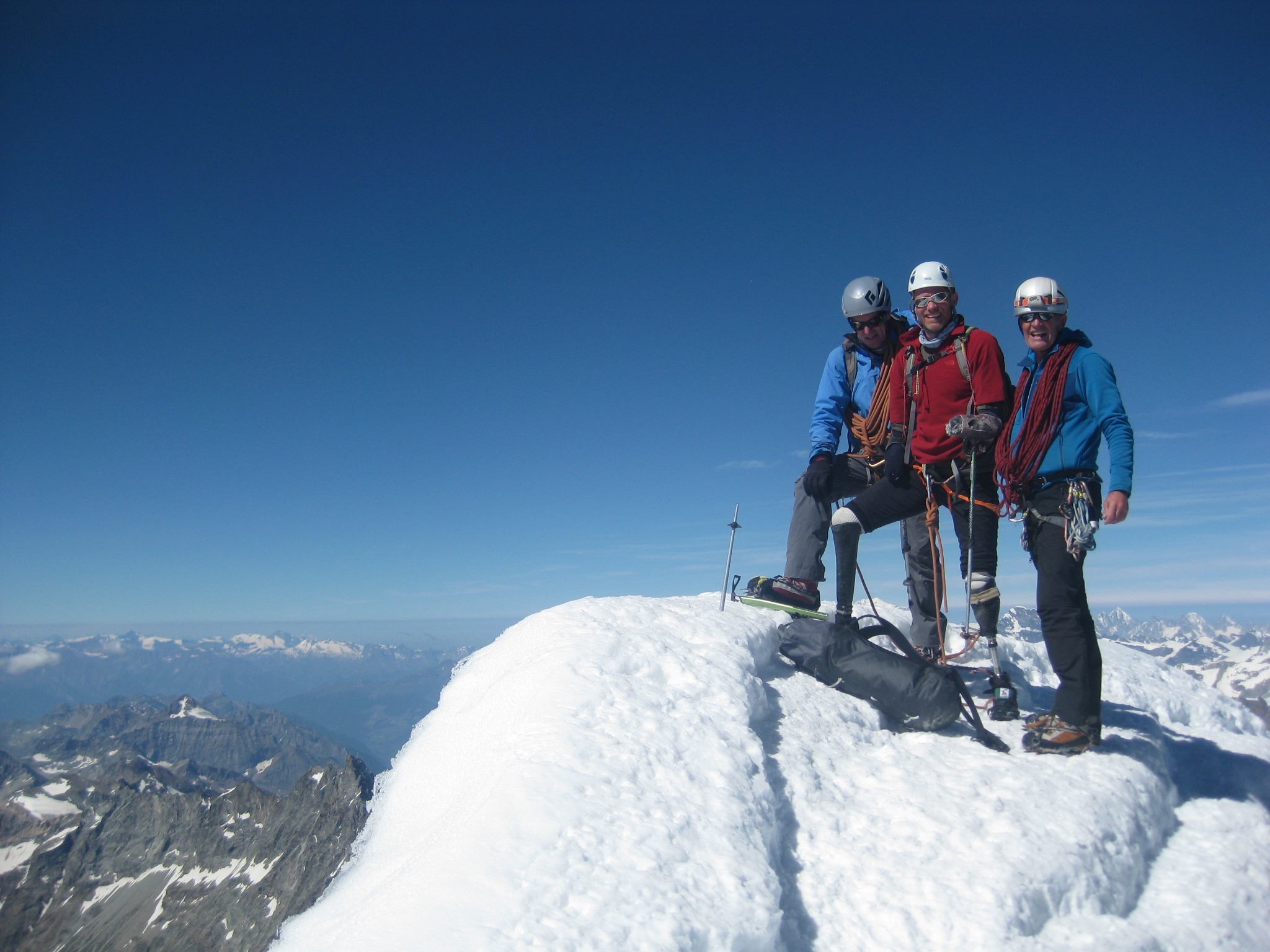A Scottish mountaineer who lost his hands and feet after suffering severe frostbite has claimed to be the first quadruple amputee to have climbed Switzerland’s Matterhorn.
Jamie Andrew, 47, from Edinburgh, scaled the 14,692ft Alpine summit using prosthetic legs and specially adapted poles.
He had to learn to walk again after being stranded in a storm when completing the North Face of Les Droites in the French Alps at the height of his climbing career in 1999.
quadruple amputee on the summit of The Matterhorn #amputeemountaineer pic.twitter.com/ZiyyUdbWVV
— Jamie Andrew (@JamieAmputee) August 5, 2016
After being rescued from the mountain, his hands and feet were amputated. His climbing partner Jamie Fisher died.
Within three and a half months, Mr Andrew was walking and he turned to skiing and long-distance running before returning to mountaineering.
He spent five years training before attempting to reach the Alpine summit last Thursday with two seasoned guides from the International School of Mountaineering.
He said: “In the end, climbing the mountain was the easy bit. It was all the graft and preparation, and trial and error (that was hardest).”
With the help of robust prostheses and the specially adapted poles, he was able to ascend much of the way towards the peak. When he needed to climb, Mr Andrew said he used what remains of his arms to hold on to the rope.
He took almost 13 hours to reach the summit and return to base camp – about five hours longer than most climbers.
He posted on Facebook that it was a “dream ascent” and a “fantastic day with the best company”.
Mr Andrew has raised more than £100,000 for charity through previous challenges in the past 17 years including climbing Kilimanjaro, Ben Nevis and participating in the London Marathon.
Kurt Lauber, a Swiss mountain guide and warden of the Hoernli Hut, confirmed the Matterhorn ascent, saying: “I don’t know of any other such case.”
He applauded the achievement, but cautioned against underestimating the Matterhorn, noting that Mr Andrew’s team narrowly missed a bout of bad weather in which two other Britons climbing on the Italian side of the mountain were killed.
He said: “It would be wrong for people who aren’t disabled to now get the impression it’s easy.”
Later this month a former British Army soldier is attempting to become the first above the knee double amputee to scale the same mountain.
In 2004, Neil Heritage, from Poole in Dorset, became the first British soldier to survive an above the knee double amputation after being injured by a suicide bomber in Basra, Iraq.
He was told he would never walk again but now the 35-year-old plans to tackle the Matterhorn and said: “I hope it encourages others dealing with physical and mental injuries to follow their dreams and realise there is life beyond injury.”







